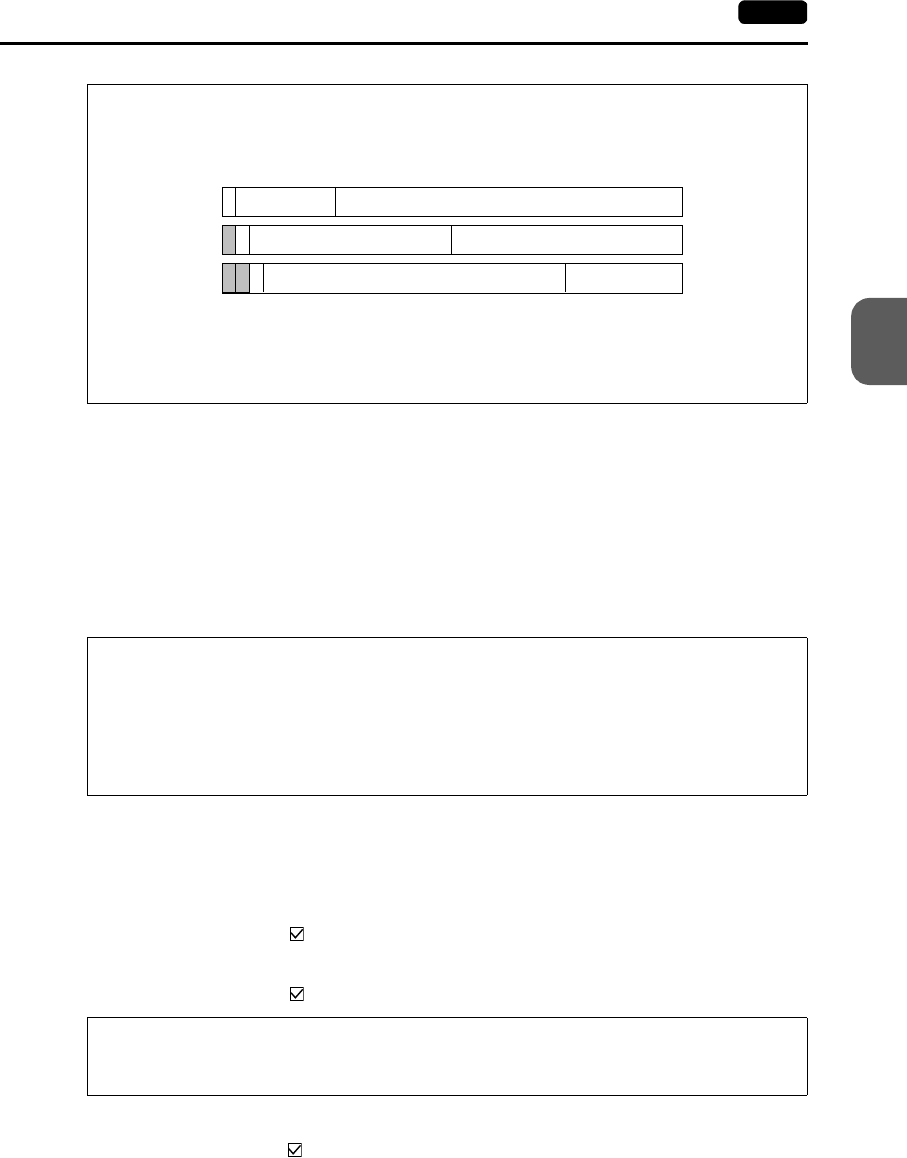
4
1. Ethernet 4-17
Network Communications
[Send Timeout]
Set the time-out time for the V7 series to send a command on the Ethernet.
[Port No.] (2049 to 65535) (Default: 10000)
Set the port number. The port number may be fixed depending on the PLC model.
Refer to the instruction manual for the PLC.
Example: YOKOGAWA FA-M3 12289: Fixed
MITSUBISHI Q series auto-open UDP port 5000: Default
(changeable by sequence)
[Select Port]
Select either AUI or 10BASE-T. When connecting to the 10BASE-T connector (LAN) of
V7i, select [10BASE-T]. Select either [10BASE-T] or [AUI] when CU-03 is mounted.
[Memory Protect]
Attach a check mark ( ) when write-protecting the internal memory or memory card.
[Default Gateway]
Attach a check mark ( ) when setting the default gateway.
[Subnet Mask]
Attach a check mark ( ) when setting the subnet mask. When this option is checked, it
is set to [255.255.255.0].
IP Address
This is an address that is used for recognizing each node on the Ethernet and should be unique.
The IP address is 32-bit data which consists of the network address and the host address and can
be classified into A to C depending on the network size.
Notation
A string of 32-bit data is divided into four, and each segment delimited with a period is in
decimal notation.
Example: The IP address in class C shown below is represented as “192.128.1.50.”
11000000 10000000 00000001 00110010
Port No.
Multiple applications are running on each node, and communications are carried out for each
application between the nodes. Consequently, it is necessary to have a means to identify the
application that data should be transferred to. The port number works as this identifier. Each port
number is 16-bit data (from 0 to 65535). However, since some numbers are already used, the
setting range available with V7i is from 2049 to 65535. It is recommended to set a greater
number.
Default Gateway
A gateway and a router are used for communicating between different networks. The IP address
of the gateway (router) should be set to communicate with the node(s) on other network.
0
10
110
Class A
Class B
Class C
Network
address (7)
Host address (8)
Host address (24)
Network address (14) Host address (16)
Network address (21)


















